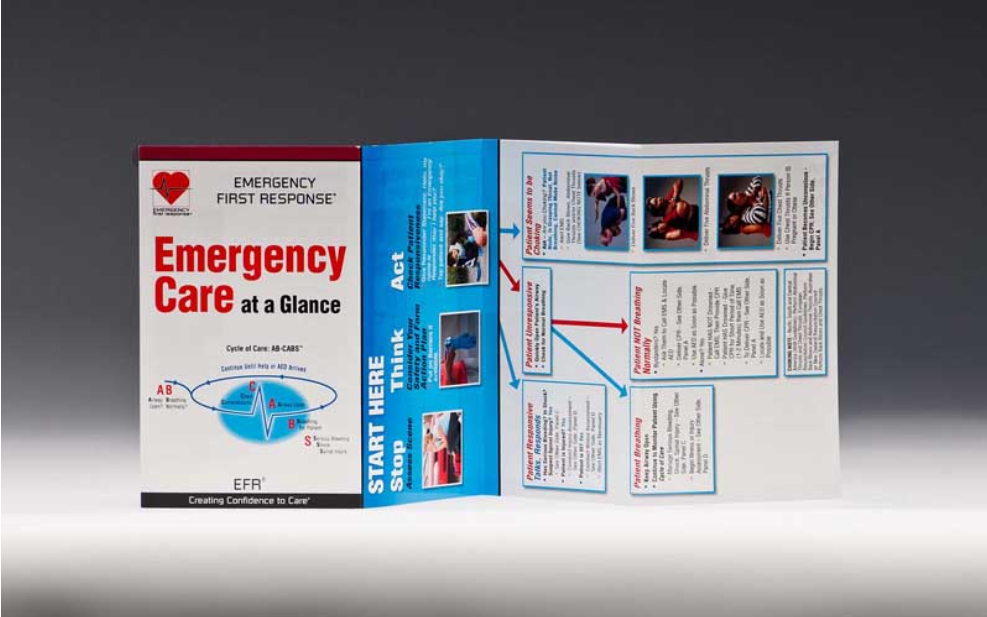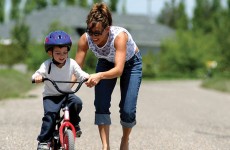Mobile devices put a wealth of medical knowledge at our fingertips, but the internet is a poor substitute for proper training. In an emergency, you won’t have time to compare articles, read the comments or study a diagram, especially if you’re injured and alone.
Hands-on training with an experienced instructor is the best way to gain the skills and confidence you need to help someone (or yourself) in an emergency. Review the first aid and CPR Do’s and Don’ts below to learn a few of the things we teach in Emergency First Response® (EFR) first aid and CPR courses.
DO ask for permission – Good Samaritan laws require consent
Most countries have Good Samaritan laws that offer legal protection to bystanders who provide voluntary life-saving assistance. To qualify for protection, the provider must ask permission (if the victim cannot reply, consent is implied).
DON’T administer aid right away – activate emergency services first
On average, it takes 7-14 minutes for emergency medical services to arrive at an accident scene. Ensure trained professionals are on their way before attempting assistance.
DON’T bend your elbows when performing CPR – you’ll waste precious energy
Performing CPR using only your arm muscles is exhausting. By keeping your arms straight, you engage your back and shoulder muscles and leverage your body weight. Recruiting more muscles improves your ability to perform chest compressions correctly, and improves endurance.
DON’T rock back and forth between chest compressions – it’s tiresome and less effective
Providing life-saving chest compressions isn’t difficult, but it can be tiring. During your CPR class, you’ll practice on a specially-designed mannequin and receive tips from your instructor on how to conserve energy.
DO roll an unconscious patient on their side – unless you suspect a spine or neck injury
Rolling someone on their side can prevent them from choking on fluids (such as blood or vomit) that may collect in their airway.
DON’T remove blood-soaked gauze – doing so could disrupt blood clots
Keep the pressure on and apply additional layers of gauze if needed.
DO replace a tooth that’s been knocked out – protecting the root is a priority
If the patient is breathing and communicating, try putting the tooth back in its socket.
If the tooth is dirty, rinse it gently and try not to touch the root. Do not put the tooth in water (this can damage the root).
If the tooth won’t stay in its socket, put it in the patient’s mouth, or in a glass of milk. Get the patient to emergency dental care within 30 minutes if possible.
DO enroll in a hands-on CPR course – online-only training isn’t enough
CPR is a physical skill, like dribbling a ball or lifting weights. Proper form matters and an experienced local instructor can give you valuable tips and feedback. Find a local EFR CPR instructor near you.
DO take first aid and CPR refresher training – we all forget things over time
Everyone, even doctors and nurses, must refresh their CPR skills every couple of years. Your EFR instructor can provide you with a quick reference card, but when moments matter, wouldn’t you rather have your life-saving skills top of mind?
Online First Aid and CPR Refresher Training
When social distancing measures are in place, you can complete first aid or CPR refresher training virtually. Using two-way video conferencing, your instructor will assess your knowledge and skills, remind you of things you may have forgotten, and answer any questions you may have.
Emergency First Response (EFR) classes are fun and educational. Learn more about our first aid courses and CPR classes, or look for an EFR Instructor near you.
Further Reading
Bad Medicine – Why You Shouldn’t Rely on the Internet for First Aid Advice
Myths About Learning CPR
8 Reasons for taking a CPR Refresher Course




